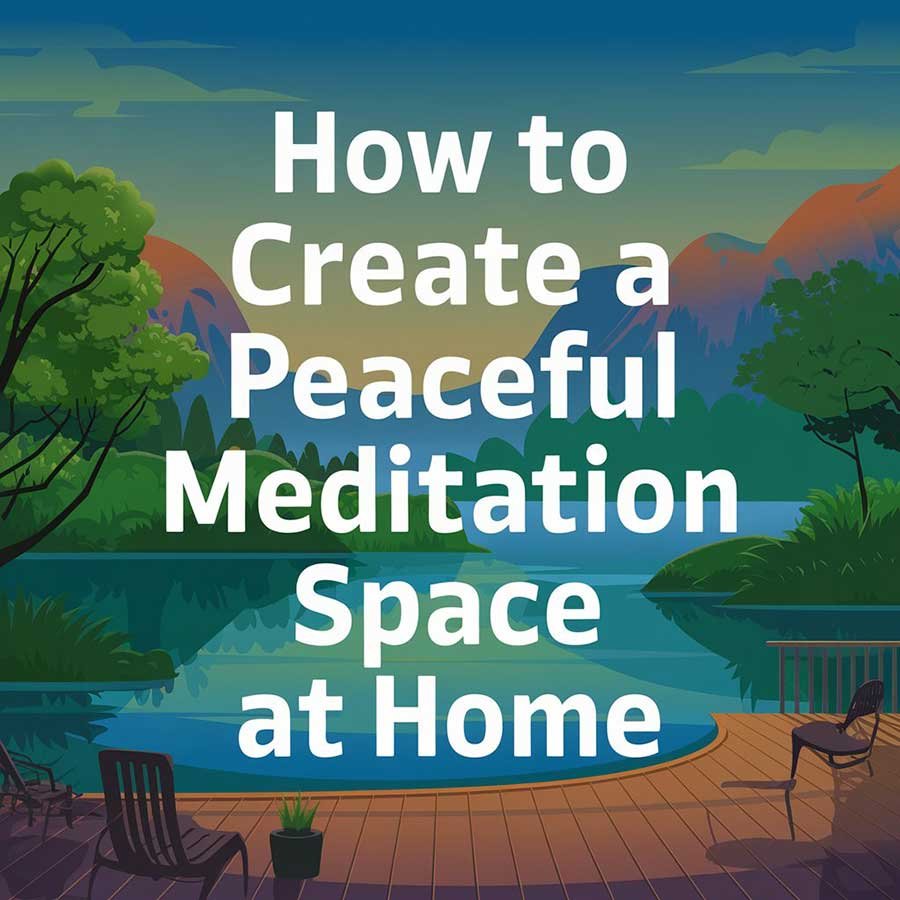
How to Create a Peaceful Meditation Space at Home
Why You Need a Dedicated Meditation Space
In today’s fast-paced world, finding moments of tranquility is essential for mental clarity and emotional well-being. Creating a dedicated meditation space at home provides a personal sanctuary where you can cultivate mindfulness, reduce stress, and deepen your meditation practice. This space serves as a reminder to slow down, breathe, and connect with yourself daily.
A well-designed meditation space doesn’t require a large area or expensive materials. With thoughtful organization and intentionality, you can transform any corner of your home into a peaceful retreat.
Choosing the Right Location
When selecting a spot for your meditation space, consider the following:
- Quietness: Choose a location away from distractions, such as high-traffic areas or loud appliances.
- Natural Light: Spaces with natural light help enhance relaxation and energy flow.
- Airflow and Comfort: Ensure the space is well-ventilated and at a comfortable temperature.
- Minimalism: A clutter-free area promotes mental clarity and focus.
If you live in a small apartment, even a corner of a room, balcony, or closet can be transformed into a meditation space.
Essential Elements for a Peaceful Meditation Space
1. Comfortable Seating
Your posture during meditation affects your focus and relaxation. Consider:
- Meditation cushions (zafus) for proper support.
- Yoga mats for floor-based meditation.
- A comfortable chair if sitting on the floor isn’t suitable.
2. Soft Lighting
Harsh lighting can be distracting, while soft lighting promotes tranquility. Opt for:
- Candles to create a serene atmosphere.
- Dim, warm-toned lamps to soften the ambiance.
- Fairy lights or Himalayan salt lamps for a cozy glow.
3. Calming Colors
The colors in your meditation space should evoke a sense of peace. Ideal colors include:
- Neutral tones like white, beige, and gray.
- Earthy hues such as greens and browns.
- Soft blues and lavenders to promote relaxation.
4. Natural Elements
Bringing elements of nature into your meditation space enhances grounding and relaxation. Consider adding:
- Plants to improve air quality and create a sense of harmony.
- A small water fountain for soothing background sounds.
- Crystals or stones that hold personal significance.
5. Aromatherapy
Scent can have a powerful effect on relaxation. Incorporate:
- Essential oils such as lavender, sandalwood, or frankincense.
- Incense sticks or resins for a meditative atmosphere.
- Scented candles to enhance your sensory experience.
6. Sound Elements
The right sounds can deepen your meditation practice. Options include:
- A singing bowl or chime to mark the beginning and end of your session.
- Soft instrumental music or nature sounds to enhance relaxation.
- A white noise machine to block out external distractions.
7. Personal Touches
Your meditation space should feel uniquely yours. Include:
- Meaningful objects such as spiritual symbols, affirmations, or personal trinkets.
- Inspirational artwork or quotes that resonate with you.
- A journal to reflect on your meditation experiences.
Organizing and Maintaining Your Space
Once your meditation space is set up, maintaining its cleanliness and organization is key to preserving its tranquility. Follow these tips:
- Declutter regularly: Keep the space minimal to avoid distractions.
- Refresh the ambiance: Change scents or rearrange elements periodically to keep the space feeling fresh.
- Make it a daily habit: Meditate at the same time each day to strengthen your practice.
Creating a Meditation Ritual
Enhancing your meditation experience involves setting a routine that prepares your mind and body. Consider the following steps:
- Set an Intention: Before you begin, take a moment to set a clear intention for your practice.
- Use a Cue: Light a candle, ring a bell, or use a specific scent to signal the start of meditation.
- Breathe Deeply: Begin with deep, mindful breathing to ease into a relaxed state.
- Meditate with Purpose: Whether using guided meditation, breathwork, or silent focus, stay present.
- Close with Gratitude: End your session by expressing gratitude for the time spent in mindfulness.
Picture This
Imagine stepping into your meditation space after a long, busy day. The soft glow of candles illuminates the room, the scent of lavender fills the air, and the gentle sounds of a singing bowl create a soothing backdrop. You settle into your cushion, take a deep breath, and let the stresses of the day melt away. With each inhale and exhale, peace washes over you, grounding you in the present moment. This is your sanctuary—a place of calm, clarity, and renewal.
Share This with Someone Who Needs It
If you found this guide helpful, share it with a friend or loved one looking to create a peaceful meditation space. Together, we can cultivate environments that support inner peace and mindfulness.






